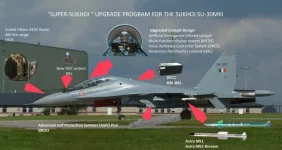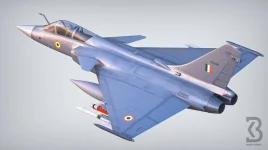- Views: 2K
- Replies: 11
The Indian Air Force (IAF) has been grappling with a dwindling number of fighter squadrons, a concern that has persisted for years. While the recent retirement of the Jaguar strike fighter fleet was inevitable due to the aircraft's age, it also represented a missed opportunity to leverage India's indigenous capabilities to extend the service life of this capable platform.
The Jaguar, a joint Anglo-French design, has served the IAF well for decades. Its impressive performance and ability to carry a diverse weapons payload made it a valuable asset in various roles, including ground attack and reconnaissance. However, the aging fleet, coupled with spare parts shortages and maintenance challenges, ultimately led to its retirement.
A potential solution that could have breathed new life into the Jaguar fleet was a comprehensive modernization program. Hindustan Aeronautics Limited (HAL), India's state-owned aerospace and defence company, possessed the Transfer of Technology (ToT) for the Jaguar, giving it the technical expertise to undertake significant upgrades. These could have included engine replacements, avionics modernization, and structural enhancements.
One crucial aspect of this modernization could have been replacing the original Rolls-Royce Adour engines with indigenous power plants. The Hindustan Turbo Fan Engine (HTFE-25), developed by HAL, was a promising candidate. This 25 kN turbofan engine with afterburner could have provided the Jaguar with enhanced performance while reducing reliance on foreign suppliers.
A revived Jaguar program could have also addressed the IAF's fighter aircraft shortfall. With a declining number of operational squadrons, inducting upgraded Jaguars equipped with state-of-the-art avionics, sensors, and indigenous engines would have offered a cost-effective solution to bridge this gap. Unlike procuring entirely new aircraft from foreign vendors, a Jaguar modernization program would have utilized existing infrastructure, supply chains, and technical expertise, reducing procurement timelines and import dependency.
Furthermore, a modernized Jaguar fleet would have been well-suited for specific operational roles, such as deep penetration strikes and maritime attack missions. The aircraft's proven ability to carry a wide range of weaponry, coupled with its robust design, makes it an ideal platform for precision strikes and low-level penetration in contested environments. With upgrades to its electronic warfare systems and radar, the Jaguar could have continued to play a crucial role in India's defence strategy.
The decision to retire the Jaguar fleet also has implications for India's aerospace sector. Building new Jaguars or significantly upgrading existing ones would have boosted HAL's manufacturing capabilities, particularly in domestic fighter jet production. It would have fostered collaboration between public and private sector firms in developing components, avionics, and engines, creating a vibrant defence ecosystem. Furthermore, this could have been a showcase project for exporting upgraded Jaguars to countries with similar operational requirements, expanding India's footprint in the global defence market.
By forgoing the opportunity to modernize the Jaguar fleet, India potentially missed a chance to bolster its air power, strengthen its domestic aerospace industry, and reduce its reliance on foreign suppliers. This decision highlights the complex considerations involved in balancing modernization needs with indigenous capabilities and strategic autonomy in defence procurement.


